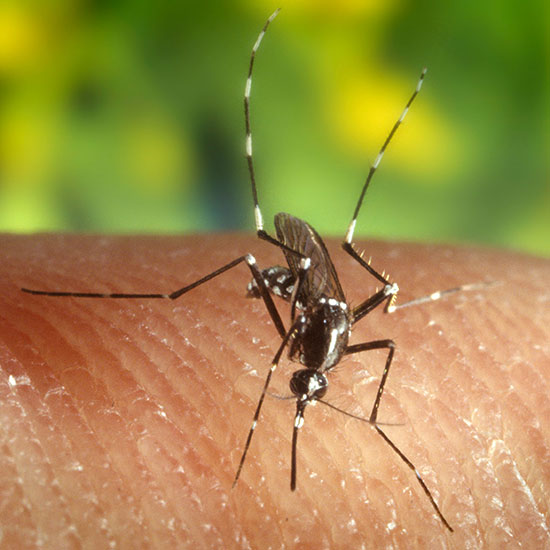12.02.14

In January, we first reported on chikungunya, a “rare viral disease” spreading in the Caribbean, with around 100 confirmed cases in the region. Flash forward eleven months, that number is up to over 16,000 confirmed and 874,000 suspected cases. Should Caribbean-bound beachgoers be worried? Here’s what you need to know:
What is it, and what are the symptoms?
Chikungunya is a virus transmitted to humans from mosquitos. According to the Centers for Disease Control, most people infected with the virus will experience fever and severe joint pain. Other symptoms could include muscle pain, headache, and joint swelling. Confusingly, many of these symptoms overlap with dengue fever.
When do symptoms first appear, and how long do they last?
As with dengue fever, symptoms usually begin within a week of being bitten by an infected mosquito. While dengue fever should subside after a week, chikungunya’s effects can last far longer, with older individuals often suffering up to three years.
Are there any islands that don’t have the virus?
Every Caribbean country and island group, with the exception of Cuba, has reported cases.
Is there a cure?
There is no known cure for chikungunya. Dr. Rajiv Narula, Medical Director at at New York’s International Travel Health Consultants and an expert on chikungunya, expects a vaccine within one two years.
How is it prevented?
Without a vaccine or a cure, proper use of repellent is the only way to prevent the virus at this time. Narula recommends using repellent with DEET, and reapplying as directed—in some cases, this could range from two to four times per day. On clothing, Narula advises clients to spray clothing with permethrin. One spraying is good for six washes. (And as the mosquito that carries the virus is active primarily in the daylight, there is no reason to worry about mosquito nets).
Should I be worried about taking children or grandparents with more vulnerable immune systems to the Caribbean right now?
North America’s winter—when millions of sun worshippers flock to the region— coincides with the Caribbean’s dry season, so the virus should see a downswing over the next few months. And while chikungunya can affect individuals over 65 more severely than younger adults, Narula does not advise any trip cancellations, even after the rainy season resumes, so long as travelers use their repellent and spray their clothes. And anyone visiting notoriously buggy areas, such as interior forests, should be extra cautious.
But isn’t DEET dangerous for children?
DEET is the main active ingredient found in many repellents and is well known for its toxicity. After two major studies on the chemical, in 1998 and again this year, the Environmental Protection Agency has concluded that when applied correctly, DEET is safe for children of all ages. Children should not apply their own repellant, however, since it is toxic when misapplied (over cuts, in eyes, etc.). Anyone who still prefers to avoid DEET can use oil of lemon eucalyptus instead, according to Narula and the CDC.
Still want more info?
The CDC and WHO both provide extensive information on chikungunya. You can also read more about the EPA’s studies here, and follow International Travel Health Consultants on Twitter for up-to-the-minute travel health advice.
Peter Schlesinger is a research assistant at Travel + Leisure and a member of the Trip Doctor news team. You can find him on Twitter at @pschles08.
Photo courtesy of Health, Science and Space / Alamy
Powered by WPeMatico











